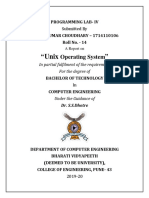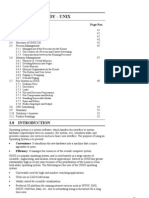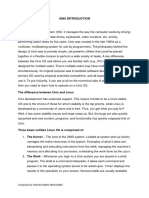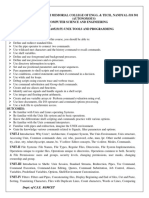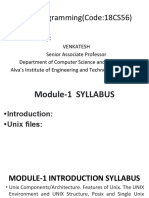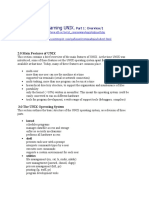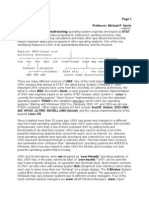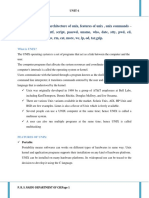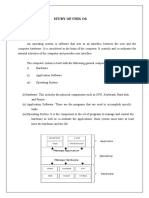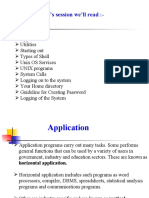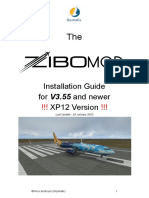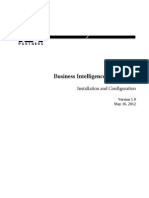0% found this document useful (0 votes)
65 views23 pages06 Introduction To UNIX
UNIX was created in the 1960s at Bell Labs and first released in 1970. It was developed by Ken Thompson, Dennis Ritchie, and others. UNIX introduced many innovative features including multi-tasking and a hierarchical file system. It became widely popular on academic institutions and later was adopted by various commercial vendors who developed their own UNIX variants.
Uploaded by
lodu lalitCopyright
© © All Rights Reserved
We take content rights seriously. If you suspect this is your content, claim it here.
Available Formats
Download as PDF, TXT or read online on Scribd
0% found this document useful (0 votes)
65 views23 pages06 Introduction To UNIX
UNIX was created in the 1960s at Bell Labs and first released in 1970. It was developed by Ken Thompson, Dennis Ritchie, and others. UNIX introduced many innovative features including multi-tasking and a hierarchical file system. It became widely popular on academic institutions and later was adopted by various commercial vendors who developed their own UNIX variants.
Uploaded by
lodu lalitCopyright
© © All Rights Reserved
We take content rights seriously. If you suspect this is your content, claim it here.
Available Formats
Download as PDF, TXT or read online on Scribd
/ 23




